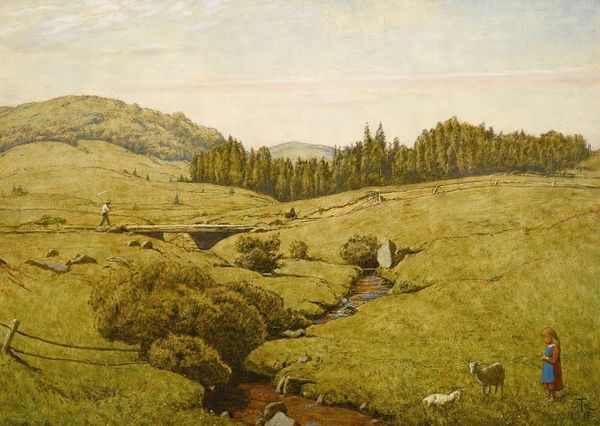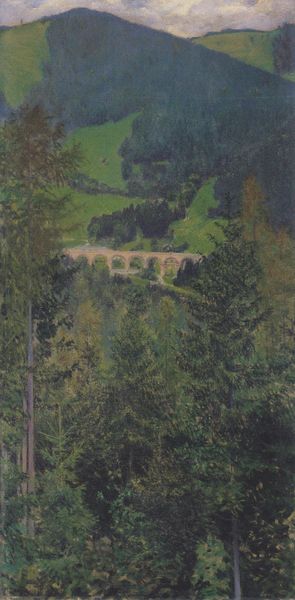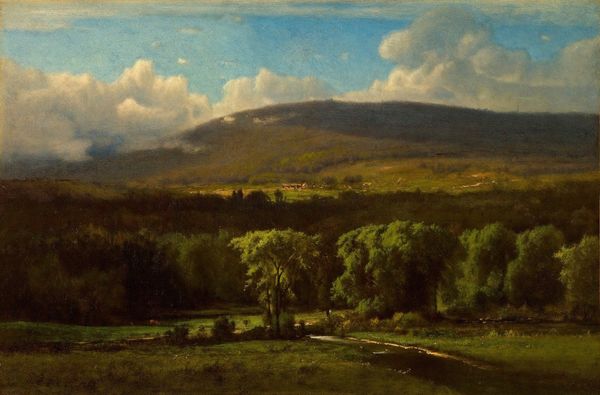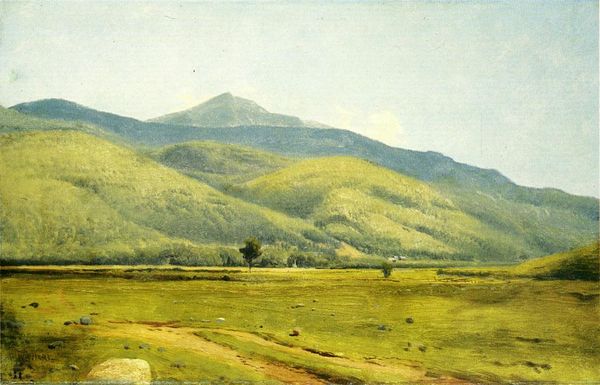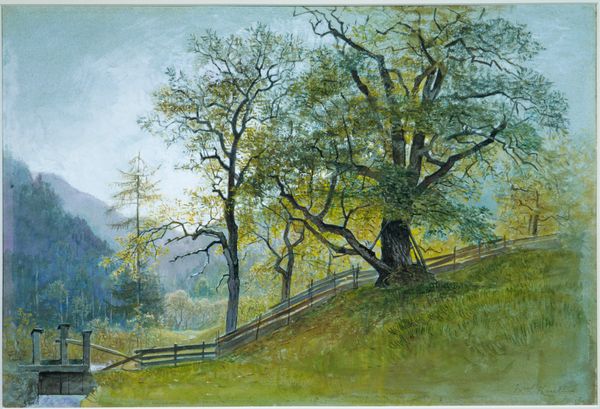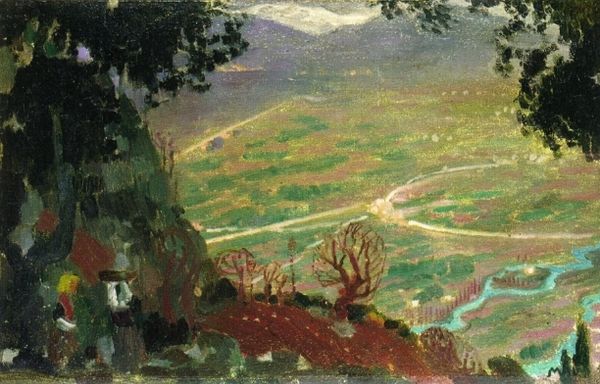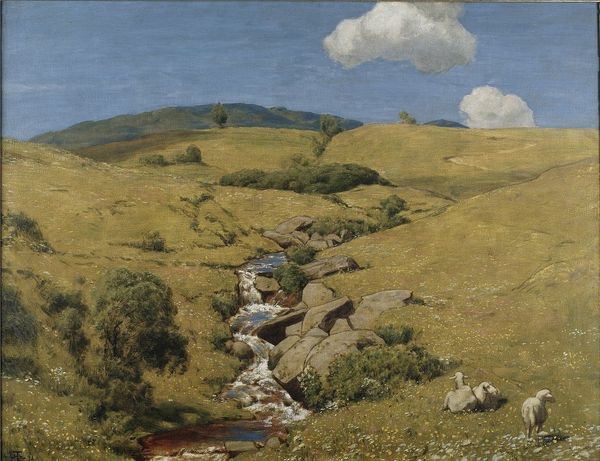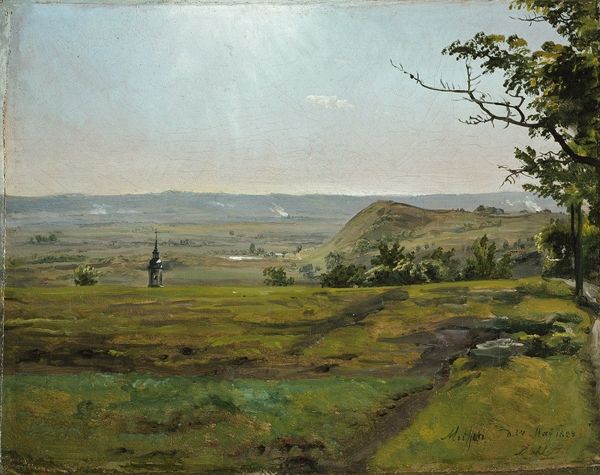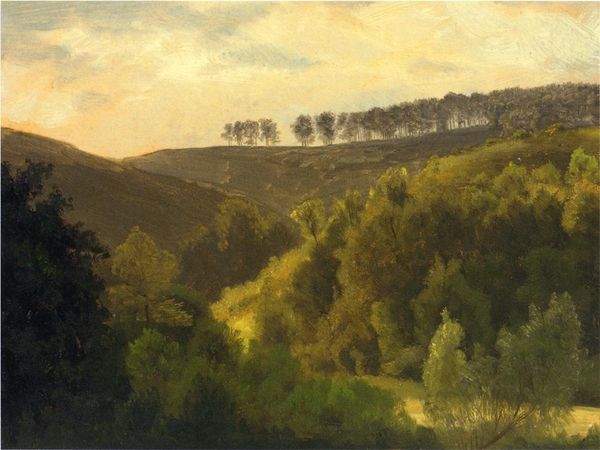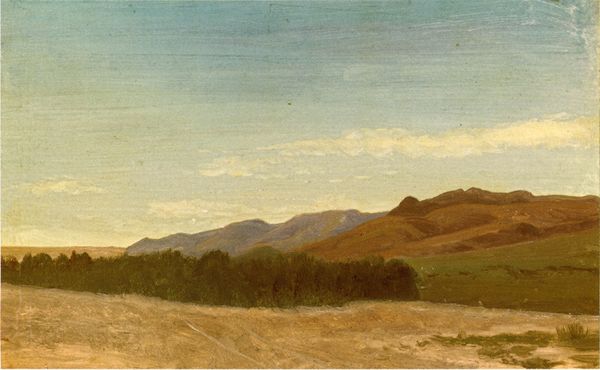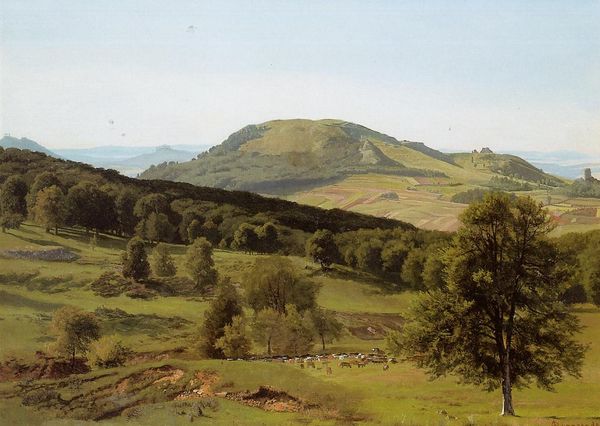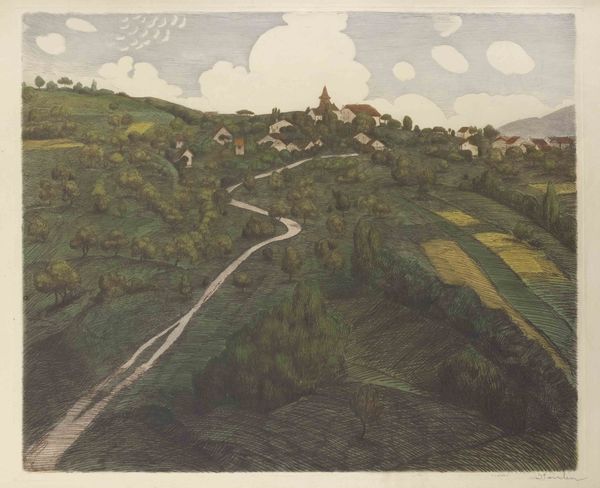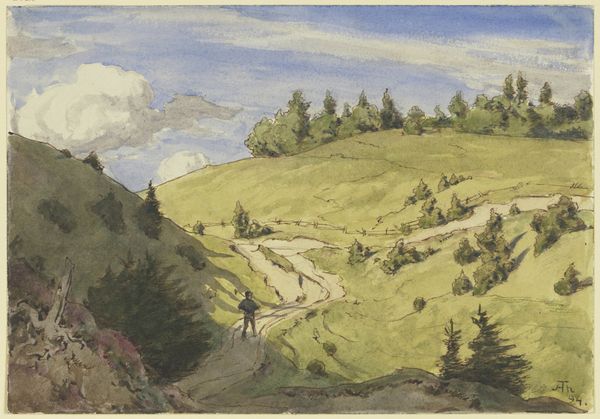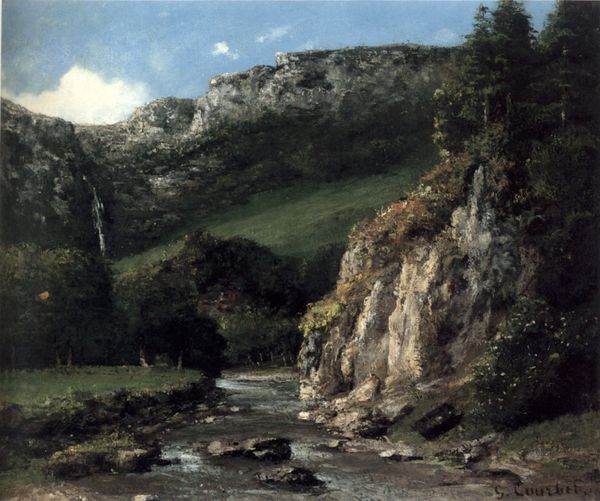
Copyright: Public Domain: Artvee
Editor: We are looking at "Der braune Bach," or "The Brown Brook," an 1882 oil-on-canvas landscape by Hans Thoma. There's such an unassuming tranquility to this scene. It feels deeply rooted in a specific place. What do you see in this painting in terms of its place within art history? Curator: I see a fascinating interplay of styles and cultural values at work here. On one hand, the artist is working 'en plein air,' which links it to impressionistic interest in directly capturing a scene and reflects a growing accessibility and importance placed on natural landscape.. At the same time, though, it leans heavily on romantic ideals and a very self-consciously 'Germanic' identity which contrasts a more French avant-garde. Think about the rise of nationalism in 19th-century Europe, how artists sought to define what made their culture distinct. How do you see that connection manifesting? Editor: It feels very grounded and wholesome...like a national pride kind of landscape instead of some sort of grand spectacle of nature. Curator: Exactly. It is a quiet, 'pure', German brook - and you will note he highlights a somewhat ordinary locale. Art in the service of cultural identity. It evokes an untouched ideal. Now, how do you see the painting engaging with the growing industrialization happening at the time it was painted? Editor: Maybe a rejection of it? This rural landscape seems deliberately detached from urban life. Is that wishful thinking though, or can we take the paintings landscape as evidence of his view of the society? Curator: Definitely a rejection, or at least a desire for escape and to re-center ideal Germanic culture with nature, at this transitional moment in time. We also need to remember that wealthy patrons often influence artistic subject-matter and production, including exhibitions. It reflects what art they wanted to be seen, which trickles down through cultural institutions, and this idyllic subject reflects many patrons. Editor: It's interesting how an unassuming landscape can be a window into such larger societal forces. Curator: Indeed. Examining art in its socio-political and historical context brings so much more meaning.
Comments
No comments
Be the first to comment and join the conversation on the ultimate creative platform.
